Woman Life Freedom
The Kurdish heart of Iran’s female-led uprising.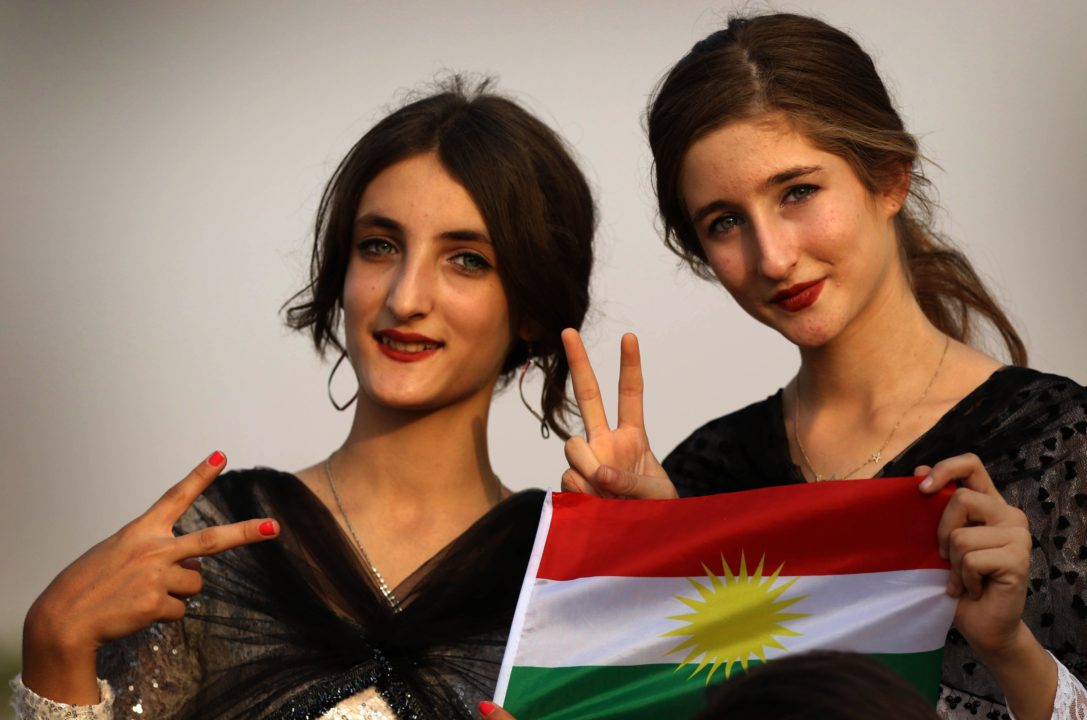 Iranian-Kurdish women rally in support of the Kurdistan Region’s independence referendum. Photo: Rudaw English
Iranian-Kurdish women rally in support of the Kurdistan Region’s independence referendum. Photo: Rudaw English
“Kurdistan, Kurdistan, the graveyard of fascism!” Of all the chants to ring out over Iran since mid-September, this one, invariably accompanied by the massive mobilization of Kurds, catches my attention. Kurdistan is the region where the protests now exploding across Iran first caught flame, and in the past few weeks, Kurdish cities have seen the most brutal crackdowns by a regime not shy about killing its own people.
It was on September 16 that the world news arrived from Tehran: a 22-year-old Iranian Kurdish woman had died in the custody of Iran’s Morality Police. Mahsa Jina Amini was visiting relatives in the capital when she was taken into custody because of a “bad hejab”—meaning a few strands of hair were showing from her standard headscarf. (In Iranian law, a woman’s hair and body must be covered by a headscarf and loose-fitting coat.)
According to her brother, Jina was in custody for two hours before collapsing and being taken to hospital, where she lay in a coma before dying. The authorities claimed that she had a heart attack related to a pre-existing condition. Her family deny this, and report that her head and body were covered in bruises and other signs of blunt trauma.
A reporter named Niloofar Hamedi broke the story. Powerful pictures of Jina’s parents receiving news of her death then circulated on social media, sparking protests in Mahsa’s homeland of Kurdistan, a far western province bordering Iraq. Another journalist, Elahe Mohammadi, travelled to Jina’s hometown to report from her graveside, and was quickly arrested. Both journalists have since been convicted of spying for foreign powers, a charge that carries the death penalty.
Mahsa Jina Amini came from Saqqez, where ethnic Kurds have long experienced discrimination. Her real name, Jina, is Kurdish, and as such could not be registered on her birth certificate in the Islamic Republic of Iran, where only Persian and Islamic names are lawful. There is some speculation that the brutality of her treatment at the hands of the Morality Police was in part due to her ethnicity. The protests at her funeral began when attending Kurdish women took off their headscarves and began chanting “jin jyan azadî” over her grave. These words —“Woman Life Freedom”—have long been at the heart of Kurdish protest.
Soon the words could be heard echoing throughout the mountainous region. In the first two days of the protests, 250 people were reportedly arrested and five killed, including a child. Still they continued to spread to the rest of the country, with the Kurdish freedom cry of ‘Woman Life Freedom’ the dominant chant. Protests have since been recorded in at least 350 locations. The Oslo-based group Iran Human Rights calculates that 448 people have been killed and 17,500 arrested, although the real numbers are likely much higher.
What started as a protest against the mandatory hejab in mid-September has become a full-throated demand for freedom. This is appropriate, as the chant of “Woman, Life, Freedom” comes from a wider Kurdish struggle in which the equality of women is understood as a prerequisite of liberty for all. Indeed, “jJin jyan azadî” was first used in the Kurdish feminist resistance movement that forms a wing of the Kurdish Workers’ Party (PKK). Its roots lie in the anti-patriarchal, anti-capitalist, Marxist-Leninist ideology of the PKK’s imprisoned founder, Abdullah Ocalan, who declared “a country can’t be free unless all women are free.”
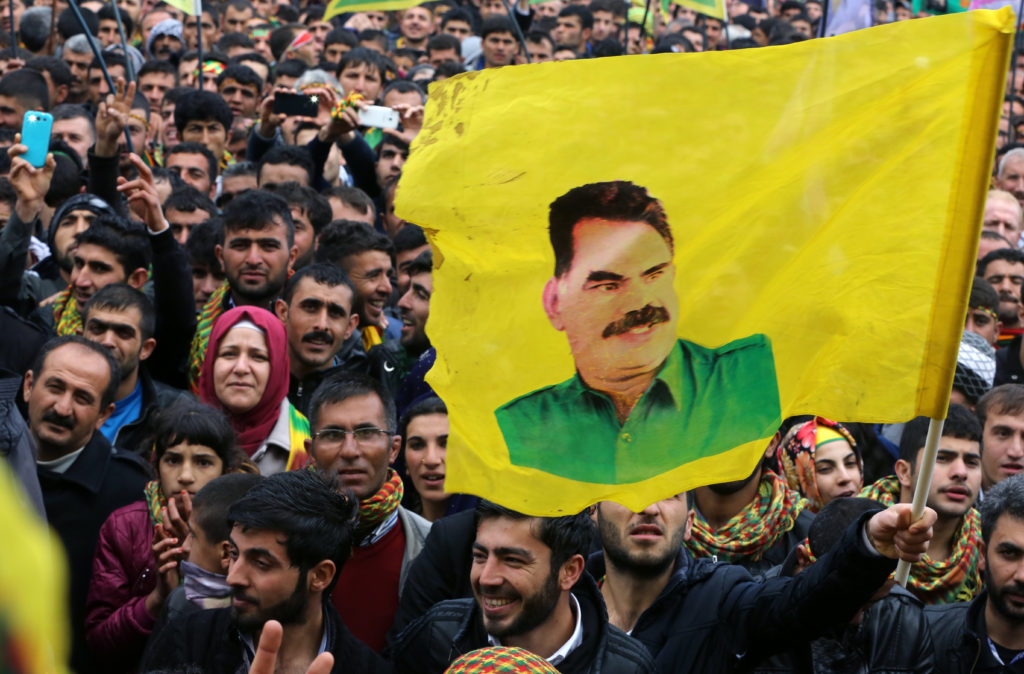
The Kurds are the fourth-largest ethnic minority in the Middle East, and their origins are shrouded in legend. One of the original Aryan tribes, their traditional homeland falls across the borders of Turkey, Syria, Iraq and Iran. In Iran, Kurds constitute about 10% percent of the 84 -million population, and constitute a Sunni minority in a predominantly Shi’a country.
In their long struggle for self-definition and some degree of autonomy, the Kurds have been repeatedly used and manipulated by stronger powers, valued for their fighting prowess and knowledge of their native mountain terrain. They have invariably been betrayed by those outside powers, bearing out the truth of an old saying, “The Kurds have no friends but the mountains.”
As an Iranian Kurd, brought up in exile in Britain since 1979, I have always been proud of my Kurdish roots. Part Persian, part Kurdish, I consider myself entirely Iranian, an identity that encompasses many regional ethnicities. But it is the Kurdish component of my identity that seems to most enchant, fascinate, and terrify people. Once, on meeting a Turkish man in London, he visibly blanched and stepped back on being told of my Kurdish origins.
I had my first encounter with the myth around the Kurds in Tehran, in a travel agency while buying an airplane ticket to Sanandaj, the capital of Iranian Kurdistan and my father’s hometown. The woman behind the counter looked at me and her eyes widened. “You’re going there?” she exclaimed. “Are you sure it’s safe?” By way of explanation she told me, “They cut off heads there, you know.”
As Sunni Muslims in the religious dictatorship of the Shia-Muslim Islamic Republic, the Kurds are subject to double-discrimination.
The Kurds are descended from the Medes, an early Iran-based dynasty that conquered Nineveh in 612 B.C. and were, in turn, conquered by the Persians 60 years later. For millennia, Kurds’ strong culture has motivated various Shahs to attempt to weaken Kurdish identity by moving them out of their traditional homelands. In 1732, Nader Shah moved Iran’s Kurds to Khorassan, but they fought their way back to their portion of the Zagros mountains. Modern Kurdish nationalism begins with Sheikh Ubeydullah’s revolt in 1880 against the Ottoman empire and Iran’s Qajar dynasty.
After the First World War, the Kurds were promised their own independent state by the Allies. Woodrow Wilson’s 14 points of January 1918 suggested that sizable ethnic minorities within the Ottoman empire be given their own states. The Treaty of Sèvres in 1920 guaranteed the establishment of a Kurdish state within a year, but it was rejected by Ataturk, the founder of modern Turkey, and never went into effect. In 1923, the final draft of the Treaty of Lausanne ignored the Kurds altogether. In 1946, as the Russian-British occupation of Iran was ending, Kurds established the short-lived Kurdish Republic of Mahabad. But when the foreign armies moved out, Iranian troops moved in. They promptly hanged Kurdish leaders, including the founder of the Kurdish Democratic Party of Iran (KDPI), Qazi Mohammad.
During the revolution of 1979, the Kurds gave their support to the revolutionaries and in return were promised self-rule. However, on his victory and return to Iran in February 1979, Ayatollah Khomeini, instead of retiring to a seminary in Qom as promised, moved to the Tehran suburbs and took absolute power. Like his predecessors, Khomeini brutally suppressed the Kurdish rebellion that ensued, sending not only troops, but bombers to quell the uprising. The struggle lasted until 1980 and claimed some 10,000 Kurdish lives; around 1,200 political prisoners were executed without trial. Since then, the Kurds of Iran have lived with routine discrimination, unable to register their own names, teach their language in schools, or hope to rise to positions of power. As Sunni Muslims in the religious dictatorship of the Shia Muslim Islamic Republic, the Kurds are subject to double discrimination.
This history informs the position of Iranian Kurds today. With regional ties to the Kurdish struggle in neighboring Turkey, Iraq and Syria, Iranian Kurds watched with pride in 2014 when Kurdish female resistance fighters in Syria, known as the Women’s Protection Units (YPJ), actively defended their homeland against ISIS as allies of the United States and Europe. But the rise of Kurdish autonomy in northeastern Syria and in Iraq served to increase the brutality of suppression in Iran. As the recent protests have intensified, Kurdish cities like Mahabad have seen the most robust protests and drawn the most savage response from the regime.
In the towns of Kurdistan, the regime’s security forces not only use bullets and gas in the streets, but shoot people inside their homes and cars. They are making arbitrary arrests of citizens, breaking down their front doors in the middle of the night, and tracking the movements of artists, filmmakers, activists, students, actors and musicians through delivery apps. Gruesome beatings are meted out to protestors, including school children in their school yards (children as young as seven have died this way). The regime has stolen and desecrated the bodies of dead protestors, conducted secret burials, and pressured the families not to reveal the mutilated state of the bodies handed back to them.
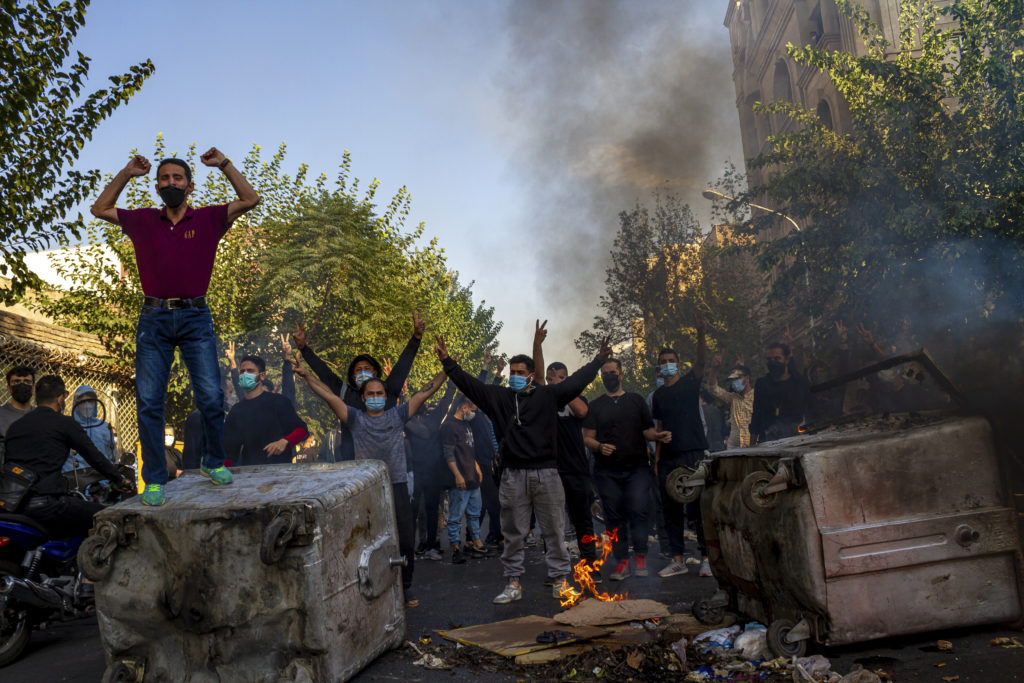
On the occasion of Jina Amini’s fortieth day memorial—in Iran an important ceremony to mark a death—thousands of Kurds in their traditional clothes converged on the cemetery in Saqqez. The regime filled the area with security forces and roadblocks from early morning, so people walked long distances across open country to reach her grave. Jina’s family, in spite of direct threats from the regime, defiantly held the ceremony to serve as a focal point for the biggest show of protest yet. (There are reports they have since been placed under house arrest.) After the ceremony, when the security forces attempted to ambush protestors in an area near the town’s army barracks, soldiers opened the barracks’ doors to people seeking shelter. They could not help them in any other way, since the crackdown is in the hands of the Iranian Revolutionary Guard Corps (IRGC), an ideological militia that is sworn to protect the revolution, not the country, and which answers directly to Supreme Leader Khamenei. (There are reports that the IRGC has de-armed local army units on the suspicion they are on the side of Kurdish protestors.)
As the rest of the country comes out to chant “Woman Life Freedom,” Kurdish towns such as Javanrud, Bukan and Mahabad suffer the heaviest presence of security forces. There are tanks and truckloads of troops on the streets, and reports of vehicles with Iraqi plates carrying members of the Hashd al Shaabi forces, an Iraqi Shiite militia with close links to the Islamic regime. Water, electricity and internet are regularly cut off, with many areas placed under a strict 9 p.m. to 9 a.m. curfew. During these hours, security forces roam the streets, often singing religious songs, or announcing over loudspeakers that they are coming to get protestors. They break into people’s homes, rob, vandalize, and kidnap. They leave intimidating graffiti on walls, promising to return.
The Kurds are embracing their reputation for fearlessness and show no sign of backing down.
Moving into December, arrests and disappearances are at an all-time high. One investigation into the treatment of disappeared protestors carried out by CNN revealed how systematic rape is used to torture men and women and force them to make false confessions. Often these overwhelmingly young victims ask their parents to bring them abortion pills. Many commit suicide within days of being released.
Strikes, which are taking place in waves across the rest of the country, have roiled Kurdistan for over two months. In a sign of the resilience of the Kurdish people, communities are helping each other with basic foods and medicines. A truck drivers’ strike now sweeping across the country—seen by activists as one of the most effective ways to cripple the Islamic Republic—has been in effect in Kurdistan for weeks now. Since the regime uses hospitals and ambulances to arrest protestors, Iranian medics all over the world have begun to offer remote consultations to those injured by tear gas, truncheons, and bullets (rubber, pellet and live rounds are all routinely used). At least 50 Kurdish citizens have been killed under torture by government institutions in the past two months, according to human rights groups. The Hengaw Organization for Human Rights Group estimates that in the last week of November alone, 42 Kurds were killed.
The Kurds are embracing their reputation for fearlessness and show no sign of backing down. As images of the regime’s brutality circulate around the world through social media, respect for the Kurds and their struggle—which is at the heart of the Iranian female struggle—is higher than ever. Other ethnic regions being pounded by the regime, notably Baluchestan and Khuzestan, are coming out to publicly praise the Kurds for their bravery, resilience, deep commitment to gender equality, and their tendency to speak out eloquently even as they bury their children. Their singing and dancing during protests manifests the enduring strength of their culture and identity. The regime’s counternarrative—that the Kurds are separatists seeking to turn Iran into another war-torn Syria—is failing to stick.
While there is the danger that foreign actors will manipulate the Kurds into waging a separatist struggle, this uprising is defined by a nation embracing Iran’s diversity — ethnic, generational, and otherwise. The protests have brought into the streets not only women who do not wish to have mandatory hejab, but also LGBTQ people, students, and everyday bazaaris. Without an apparent leadership or central organization, they are primarily led by young women, but also others who cut across gender, age, and socio-economic status.
Since September, the simple demand for human rights, equality, and democracy at the heart of these protests has led to powerful scenes of civil disobedience that, until recently, were beyond our wildest imaginings. Schoolgirls with their hair loose stomping pictures of Ayatollahs and chasing regime representatives from their school yards. Women quietly going about their daily business without a loose coat or head covering. We have seen the retaking of public spaces by women using their physical bodies, hair included, to take back the streets, the squares, the school yard, the university campus. These women are overwhelmingly young, but their cries of “Woman Life Freedom” carry the voices of all Iranian women who have been silenced and suffered indignity, humiliation and erasure at the hands of “God’s own government.”
This cry, even amid horrible suffering, gives us hope.
Your support matters…Independent journalism is under threat and overshadowed by heavily funded mainstream media.
You can help level the playing field. Become a member.
Your tax-deductible contribution keeps us digging beneath the headlines to give you thought-provoking, investigative reporting and analysis that unearths what's really happening- without compromise.
Give today to support our courageous, independent journalists.

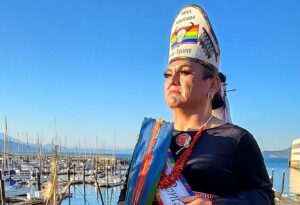
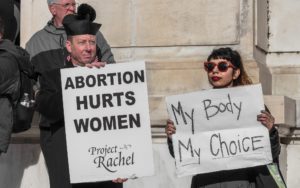
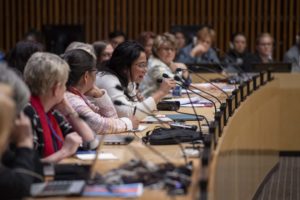
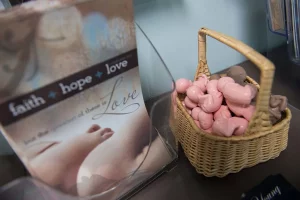
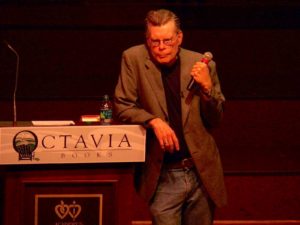
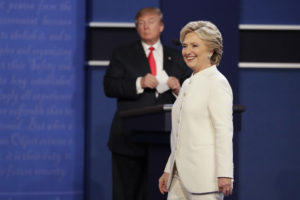


You need to be a supporter to comment.
There are currently no responses to this article.
Be the first to respond.